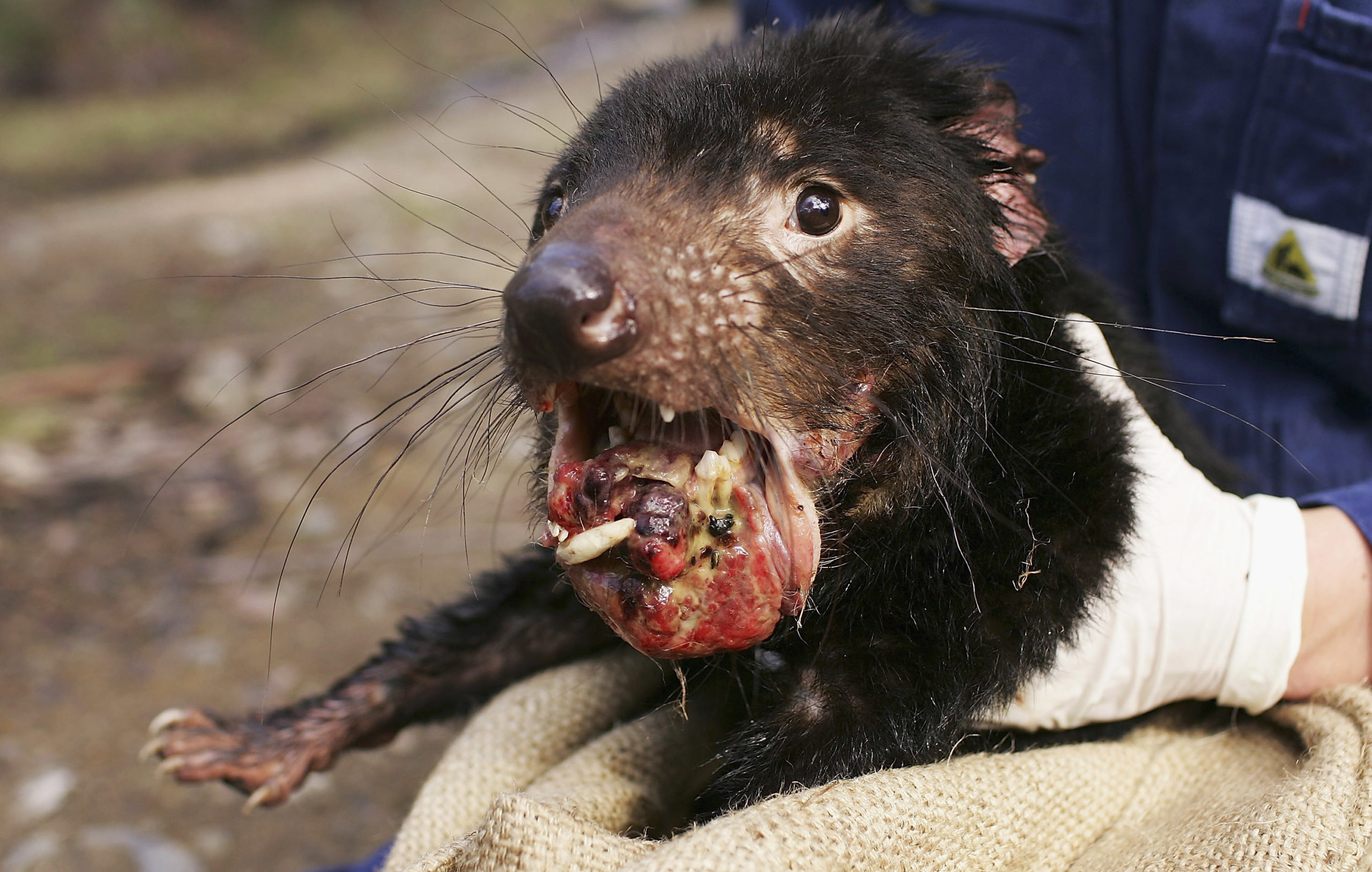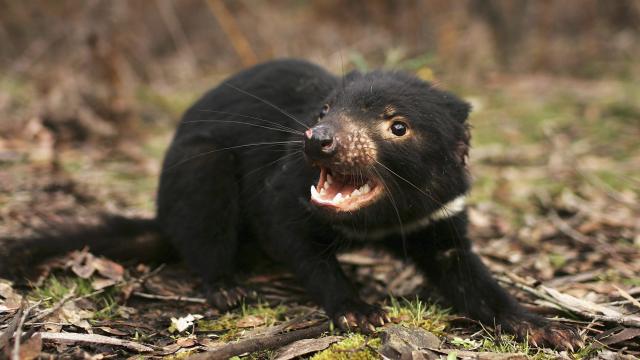A new study out Thursday suggests that Tasmanian devils are starting to adapt to one of the strangest diseases known in nature: a contagious cancer spread by biting. The study has found evidence that the disease is spreading more slowly and becoming endemic in the devil population, rather than the very fatal and rapidly spreading epidemic it was when first discovered in the 1990s. The discovery hopefully means that this cancer won’t drive these animals to extinction as feared.
In 1996, scientists began reporting the emergence of a distinctive cancer among Australia’s Tasmanian devils — one that left its marsupial victims with large tumours on their mouths and necks that quickly grew in size and often proved fatal within three to five months. This eventually became known as devil facial-tumour disease, or DFTD. Unlike other cancers, though, DFTD was transmissible from one animal to the next, usually through the biting that devils regularly do when fighting for social dominance or even as part of their mating ritual.
Normally, a person or animal’s cancer is keyed to that specific individual, since cancerous cells are just the mutated version of cells in the body. Cancer typically isn’t transmissible because our bodies are pretty good at detecting and killing off foreign cells, including someone else’s normal and rogue cells. The opposite is also one reason why cancer happens — because our immune system is worse (though not completely useless) at recognising the internal threat. Somehow, DTFD cancer cells have ditched the genes that program them to look slightly different to the immune system of other devils, allowing it to become contagious.

This new research, largely based on the genetic analysis of DFTD tumours collected over the past few decades, suggests that the disease has begun to mellow out, according to study author Andrew Storfer, a genetics researcher at the University of Washington who studies how emerging infectious diseases — and their relationship to a host — evolve over time.
His team’s work, published in Science Thursday, indicates that DTFD isn’t spreading as easily as it did at first. Back then, a devil with DTFD would have been expected to infect another three to four devils on average. But now, an infected devil might only transmit DFTD to one other devil on average. When a disease reaches this sort of equilibrium, where it isn’t increasing or decreasing in the population, it can be considered endemic.
Stofer noted that there are likely three reasons why this has happened. One is simply that since there are less devils around, there are less possible chains of transmission for the disease to keep spreading. But devils may have also begun evolving in response to the cancer, allowing them to better resist catching it. Lastly, there’s recent evidence that these tumours can now sometimes just regress or completely disappear as quickly as they arrived, partly because of mutations in the tumours themselves and the devils’ innate defences. Another interesting footnote they uncovered, supported by other research, is that these tumours were likely spreading in the devil population for at least a decade before their discovery in 1996.
“We think it’s good news for the future of the devil, and combined with a growing number of genetic analyses and models, extinction of the species seems unlikely,” Stofer said via email. “Rather coexistence with the disease at lower population numbers or even disease extinction are more likely.”
Transmissible cancers are rare but not unheard of in the animal kingdom (none are thought to exist in people, except maybe under very weird circumstances). Devils, dogs, one species of hamster, and some species of clam have their own version. But DFTD has proven especially deadly to the already endangered Tasmanian devil. Since its discovery in 1996, it’s contributed to as much as 75% of the total population dying off. That’s also been trouble for the wider ecosystem, as devils are one of the key predators in Tasmania, an island state south of mainland Australia.
There are still some concerns about DFTD and the fate of Tasmanian devils. In recent years, some conservationists have started to introduce captive devils to populations in the wild. But if Stofer and his team’s work is right, then this might actually endanger DFTD’s taming process, since these introduced devils aren’t as adapted to the disease as those living in the wild. One way to prevent this is to avoid mixing captive devils into the native population for now, the authors wrote, except as a last resort.
Another worry is that another “strain” of DFTD, called DFTD-2, has emerged recently in southeastern Tasmania and is now evolving in its own unique way. Any later plans to help further stem the spread of DFTD, such as vaccines dispensed through oral baits, will have to account for these divergent strains, the authors caution.
For now, though, the future looks brighter than expected for the Tasmanian devil. And the work done by Stofer’s team might only be the start. They used a technique for studying the evolution of these tumours that’s previously only been used for studying viruses with a few genes. The DTFD tumour, however, has over 11,000 genes. So there’s probably no reason why the same methods couldn’t be used to study the evolutionary path of all sorts of other infectious diseases, including those caused by bacteria and fungi.
